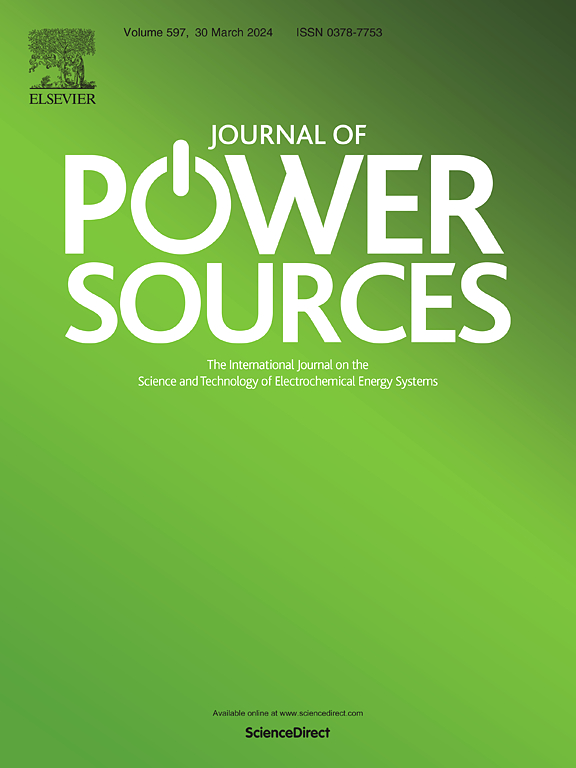Effect of cylindrical and prismatic configurations on supercapacitor self-discharge and their mitigation approach by external charging strategies
IF 8.1
2区 工程技术
Q1 CHEMISTRY, PHYSICAL
引用次数: 0
Abstract
Supercapacitors with cylindrical and prismatic configurations exhibit notable differences in self-discharge performance. The experimental results reveal that prismatic supercapacitors demonstrate superior self-discharge performance than their cylindrical counterparts across various holding times. In fact, prismatic supercapacitors experience a smaller absolute voltage drop due to both Ohmic leakage and diffusion contributions when compared to cylindrical supercapacitors.
For interpreting the differences in terms of Ohmic leakage and diffusion, the result of electochemical impedance spectroscopy reveals that the ratio of internal resistance between the cylindrical supercapacitor and the prismatic supercapacitor is inversely proportional to the ratio of absolute voltage drop due to Ohmic leakage. In addition, the results of numerical models for diffusion show that the reduced self-discharge observed in the prismatic supercapacitor is attributed to a smaller concentration gradient at the end of charging.
Finally, mitigation of self-discharge for cylindrical and prismatic supercapacitors by external charging strategies is investigated. The results show that charging-holding-resting strategy exhibits the best self-discharge mitigation for cylindrical supercapacitors. On the other hand, both charging-holding-resting-discharging and charging-holding-resting strategies prove to be similarly effective in mitigating self-discharge for prismatic supercapacitors. This could serve as an external approach to effectively mitigate self-discharge of a supercapacitor with specific configuration.
求助全文
约1分钟内获得全文
求助全文
来源期刊

Journal of Power Sources
工程技术-电化学
CiteScore
16.40
自引率
6.50%
发文量
1249
审稿时长
36 days
期刊介绍:
The Journal of Power Sources is a publication catering to researchers and technologists interested in various aspects of the science, technology, and applications of electrochemical power sources. It covers original research and reviews on primary and secondary batteries, fuel cells, supercapacitors, and photo-electrochemical cells.
Topics considered include the research, development and applications of nanomaterials and novel componentry for these devices. Examples of applications of these electrochemical power sources include:
• Portable electronics
• Electric and Hybrid Electric Vehicles
• Uninterruptible Power Supply (UPS) systems
• Storage of renewable energy
• Satellites and deep space probes
• Boats and ships, drones and aircrafts
• Wearable energy storage systems
 求助内容:
求助内容: 应助结果提醒方式:
应助结果提醒方式:


